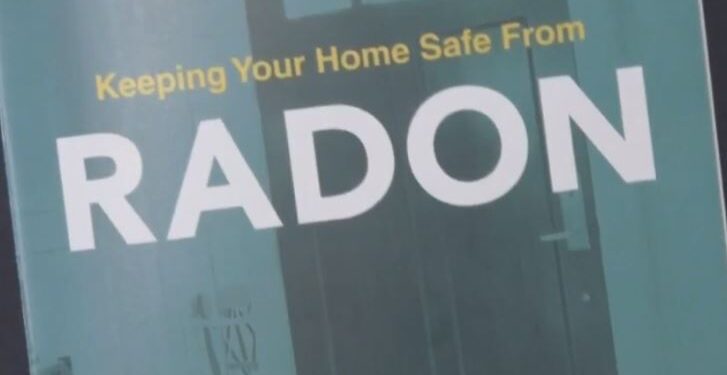LANSING, Mich. – January is Radon Action Month, and the Michigan Department of Environment, Great Lakes and Energy is raising awareness about the importance of testing your home for radon gas.
Leslie Smith is EGLE’s indoor radon specialist, he said it’s not just old houses or homes with basements that need to be tested.
“As the home is evacuating air and that vacuum is being created, it’s helping pull radon through those small openings,” Smith said. “It can enter the home through the smallest of cracks in the foundation, around loose fitting utility access points through the concrete or the side walls.”
Radon is a naturally occurring radioactive gas that comes from the breakdown of uranium in the soil. All 83 counties in Michigan have shown elevated levels of Radon in the soil.
“Every home has some level of radon gas in it because all of our homes are in physical contact and the soil.” Smith said. “Radon it’s not an old home issue. it isn’t any home issue. Unless someone’s home is up, actually up in the air on stilts with nothing underneath it, they would have very little to no radon indoors, but every home that’s in physical contact.”
Smith stressed the importance of testing your home because of the potential health effects. Prolonged radon exposure is the second most common cause of lung cancer in The US, only behind smoking.
Radon gas comes into a house from the soil through the foundation and walls. Things like climate control, exhaust systems, and even the weather outdoors can create a vacuum that pulls more radon out of the ground and into a house.
Smith said there are short-term and long-term tests that can be done to determine radon concentration. Short-term tests, ones performed over 3 to seven days, can be bought at most hardware stores. While long-term tests, ones performed over 90 days to a year, are usually done through the local health department. If the results come back with elevated levels of radon, Smith said the mitigation systems are fairly simple and usually consist of PVC piping that redirects air from under the house, to the outside.
“They’re pretty basic when you look at them. They usually consist of three-inch to four-inch diameter PVC plastic piping. Ultimately that piping is going to run to a fan which is normally usually will be situated or positioned outside the home on the home’s exterior. That fan will then have additional piping that will be running up to the edge of the roofline of the home.” Smith said. “By lowering the concentration of radon underneath the structure, it lowers the concentration of the radon indoors. It will never be zero indoors but it sufficiently reduces the radon levels in the home.”
Smith said that even if an initial test comes back with only low levels, radon testing should be done every two to five years to catch any fluctuations early and avoid long-term exposure.


















